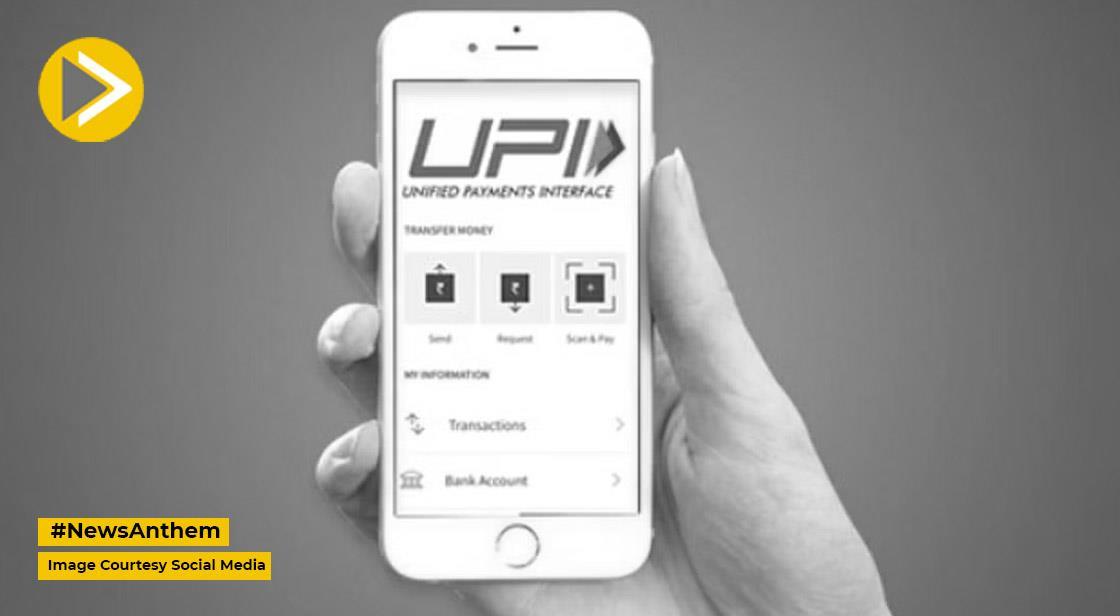UPI Surge During Diwali Signals Deepening Digital-Payment Shift in India

News Synopsis
India’s digital payments landscape witnessed a remarkable milestone this Diwali as the Unified Payments Interface (UPI) achieved its highest-ever single-day transaction value and volume.
As per data from the National Payments Corporation of India (NPCI), UPI transactions on Diwali eve (18 October) soared to 754 million, with total payments worth a record Rs 1.02 lakh crore — highlighting how festive enthusiasm, coupled with reduced GST rates, continues to fuel India’s digital economy.
UPI’s Festive Surge Breaks All Records
The festive month of October turned out to be exceptional for UPI. Daily transaction values averaged Rs 94,000 crore, reflecting a 13% increase compared to Rs 82,991 crore in September. Similarly, the average daily transaction count jumped from 654 million to 695 million.
Overall, UPI recorded Rs 23.5 lakh crore through 16.58 billion transactions during the month — a strong indication of the growing digital adoption in both urban and rural India.
Festive Cheer Drives Digital Spending Boom
The Diwali period has always been synonymous with heightened consumer spending, but 2025’s numbers reveal a significant shift toward digital-first payments. Attractive festive offers, lower GST rates on select categories, and effortless payment experiences via PhonePe, Google Pay, and Paytm drove massive volumes of online and offline digital transactions.
Credit cards also witnessed robust growth, especially in e-commerce. Online credit-card spending jumped 22% year-on-year, while debit-card e-commerce usage fell by 24%, signalling consumers’ growing preference for credit-based digital purchases. For the second consecutive year, online credit-card transactions (4.8 million) surpassed point-of-sale (PoS) swipes (4.2 million) — solidifying e-commerce’s dominance during festive shopping.
Offline spending showed resilience too, with PoS transactions climbing 15.6%, marking the strongest growth in three years. In contrast, debit-card transactions continued to decline across both PoS and e-commerce platforms. Prepaid instruments like wallets and gift cards recorded the steepest fall — down 26% in volume and over 50% in value — as UPI’s ease and speed continued to overshadow older digital payment methods.
UPI Expands Its Footprint Beyond Metro Cities
While PhonePe and Google Pay continue to lead the digital payments ecosystem, smaller UPI players are fast gaining traction. Platforms such as Navi processed around 500 million transactions in August, while Flipkart-backed Super.Money recorded 250 million, and NPCI’s BHIM app handled about 100 million.
As a result, the combined market share of the top two players slipped slightly — from 85% last year to 80% now. This increasing participation from emerging fintechs is diversifying the ecosystem, reducing dependence on a few major players, and fostering greater innovation.
According to Shikhar Aggarwal, Chairman, BLS E-Services, the record UPI surge highlights India’s growing trust in digital transactions.
“What began as an urban convenience has now become a nationwide habit, reaching even the most remote districts. Festive shopping, e-commerce discounts and easier access to digital infrastructure have accelerated adoption across all income groups. The UPI story is not just about technology; it’s about empowerment and trust driving India’s journey towards a truly digital economy,” Aggarwal stated.
UPI’s Broader Economic Ripple Effects
Beyond the convenience of payments, UPI’s role in financial inclusion is deepening, according to Sarika Shetty, Co-founder and CEO of RentenPe.
“It has helped the unorganised sector connect with a larger market, including millions of renters who now make rent payments digitally. This creates a verifiable digital footprint that enables data-driven financial profiling, opening access to formal credit and long-term financial products,” she explained.
Echoing the sentiment, Manish Goyal, Chairman and Managing Director, Finkeda, said:
“Diwali didn’t just light up homes, it illuminated India’s digital payments ecosystem. The UPI peak of Rs 1.02 lakh crore reflects the synergy of festive consumption, cashless convenience, and GST rate cuts. It shows how deeply embedded digital payments have become in both household purchases and retail spending.”
Conclusion: UPI at the Heart of India’s Digital Revolution
The Diwali 2025 season — marked by UPI’s record Rs 1.02 lakh crore single-day transactions and an impressive daily average of Rs 94,000 crore — underscores India’s accelerating shift toward a cashless society. What once began as a niche urban trend has now become an integral part of everyday life across the country.
As fintech innovation expands, consumer preferences evolve, and digital infrastructure continues to strengthen, India’s cashless economy is evolving into a sustainable, inclusive financial ecosystem. This year’s record-breaking UPI performance is not just a seasonal high; it symbolizes a structural transformation — one where digital payments are becoming the backbone of India’s growth and financial empowerment.
You May Like









